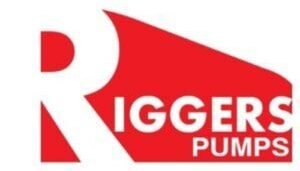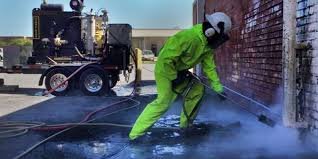High pressure hydroblasting also known as high pressure water jetting or hydrojetting, is a cleaning technique that uses highly pressurized water to remove contaminants, debris, and buildup from surfaces, structures, and equipment. High Pressure water Hydroblasting method is commonly used in industrial cleaning applications due to its effectiveness and efficiency.
Key Components of High Pressure Hydroblasting:
- Water Jetting Equipment: Includes pumps, hoses, nozzles, and control systems designed to generate and manage high-pressure water streams.
- Hydroblasting Pump: Hydroblasting pumps are high-pressure pumps designed to generate extremely high water pressure for industrial cleaning and material removal applications. The process, known as hydroblasting, involves using high-pressure water jets to clean surfaces, remove coatings, or cut materials. Hydroblasting pumps are engineered to handle pressures ranging from 10,000 PSI to over 40,000 PSI and are powered by electric motors, diesel engines, or hydraulic systems.
- Pressure Levels: Depending on the application, pressure can range from 10,000 psi (pounds per square inch) to over 40,000 psi.
- Nozzles: Specially designed nozzles control the shape and direction of the water jet, optimizing the cleaning process for specific tasks.
Applications:
- Surface Preparation: Removing old paint, rust, and coatings from surfaces prior to recoating.
- Pipe and Tube Cleaning: Clearing blockages, scale, and debris from the interior surfaces of pipes and tubes.
- Heat Exchanger Cleaning: Removing fouling from heat exchanger tubes to improve heat transfer efficiency.
- Tank Cleaning: Cleaning storage tanks, reactors, and vessels, particularly in the oil, gas, and chemical industries.
- Concrete Demolition: Cutting and removing concrete without using explosives or heavy machinery.
Advantages:
- Effective Cleaning: High-pressure water can remove even the most stubborn contaminants and deposits.
- Environmentally Friendly: Uses only water, reducing the need for chemical cleaners and minimizing environmental impact.
- Non-Abrasive: Does not damage the underlying material being cleaned, making it suitable for delicate surfaces.
- Versatile: Can be used in a wide range of applications and industries.
- Cost-Effective: Reduces downtime and maintenance costs by efficiently cleaning equipment and surfaces.
Process:
- Preparation: Assess the area or equipment to be cleaned and select the appropriate pressure level and nozzle type.
- Safety Measures: Implement safety protocols, such as wearing protective gear and ensuring proper handling of high-pressure equipment.
- Hydroblasting: Direct the high-pressure water jet at the surface or equipment, moving the nozzle as needed to cover the entire area.
- Inspection: After cleaning, inspect the area to ensure all contaminants have been removed and the surface is clean.
- Post-Cleaning: Properly dispose of any waste generated during the process and store equipment.
Safety Considerations for High Pressure Water Hydroblasting:
- Protective Gear: Operators must wear protective clothing, gloves, goggles, and face shields to protect against high-pressure water and debris.
- Training: Operators should be trained in the safe use of hydroblasting equipment and aware of the risks involved.
- Equipment Maintenance: Regularly inspect and maintain equipment to prevent malfunctions and ensure safety.
- Area Safety: Secure the area being cleaned to prevent unauthorized access and protect bystanders from potential hazards.

